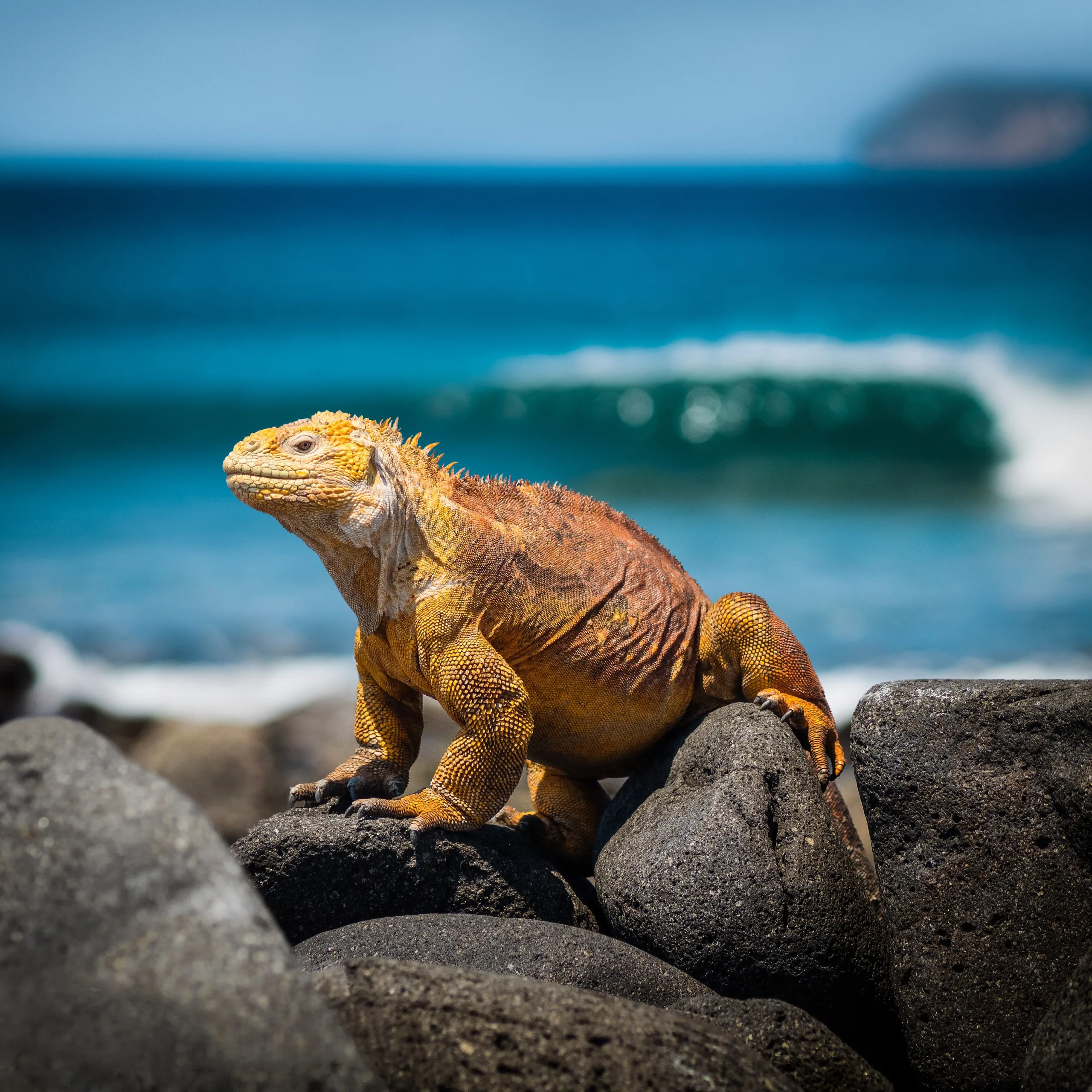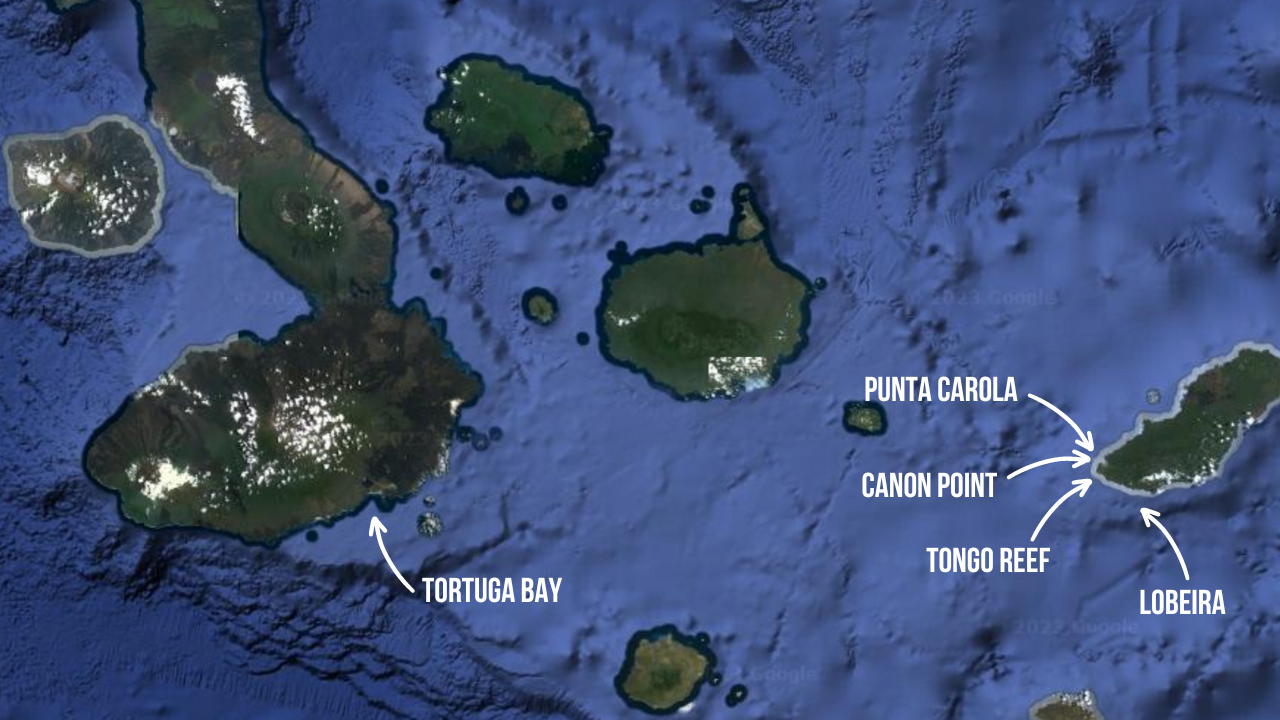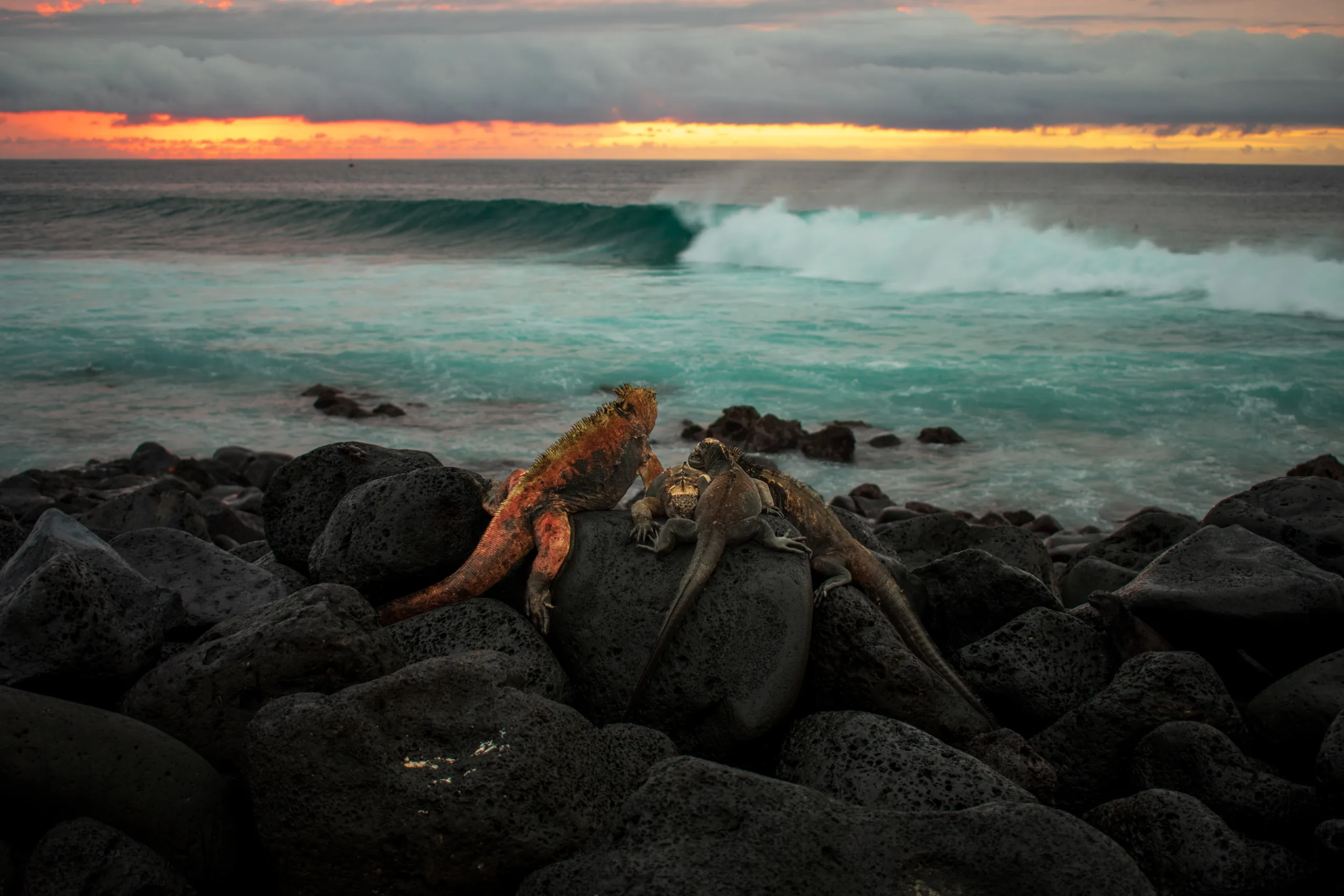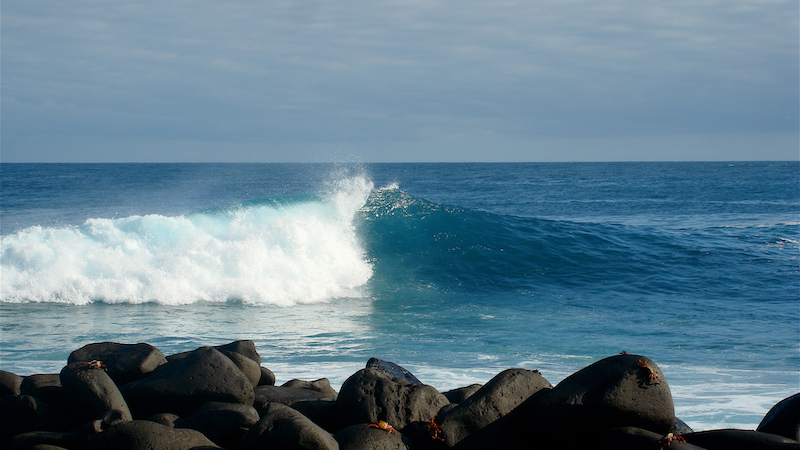It’s one of the most interesting places to visit on earth, boasting unique wildlife, sunny skies, and beautiful landscapes–a location high on every traveler’s bucket list. But what’s it like as a surf destination? Well, thanks to Galapagos’ position to receive both North and South Pacific swells, there are plenty of waves here. Most waves are powerful volcanic reef breaks, reminiscent of Hawaii or the Canary Islands. In this article, we dive into everything you need to know for surfing in the Galapagos.
Overview
- Powerful reef breaks
- Tropical paradise
- Wave variety
- Expensive
- Shallow reef
Table of Contents
Best Time of Year to Surf in Galapagos
It depends on the break. Most of the best spots work during the northern hemisphere winter (October – April), whereas other breaks work from April to October. We’ll dive into some of the best Galapagan surf spots and when they work below.
Galapagos Surf Spots
Northern Hemisphere Breaks
Punta Carola
The best wave in the Galapagos– a fast powerful right-hander, which on the right swells is a freight train barreling right. A ship that landed on the reef a while ago improved the shape of this wave. however, with such quality, the place gets super crowded!
- Crowds: Busy
- Best Swell: Large N
- Best Wind: Offshore
- Wave Type: Right Reef
- Consistency: 70%
- Hazards: Shallow reef, crowds
Canon Point
Defined by the canon statue on the headland. Canon is a fun left point that can work and hold larger swells. Similar to Carola, Canon works on North/North-west swells and requires a ten-minute walk around the headland.
- Crowds: Moderate
- Best Swell: Large N
- Best Wind: Offshore
- Wave Type: Left Reef
- Consistency: 70%
- Hazards: Shallow reef, crowds
El Valero
On the SE tip of San Cristobal is a fun wave that can be worth a check if it’s too small for Carola and the other northern hemisphere breaks.
- Crowds: Low
- Best Swell: Small N
- Best Wind: Offshore
- Wave Type: Reef
- Consistency: 70%
- Hazards: Shallow reef, crowds

Southern Hemisphere Waves
El Tongo
El Tongo is a long walk (unless you organize a boat) past a military checkpoint (and a heap of sea lions, lizards, and classic Galpagos wildlife). It’s a fun left reef that’s split into three sections. El Pico, El Medio, El Bajito. You need to provide some ID at the checkpoint and then you have a 45-minute walk around the coast.
- Crowds: Low
- Best Swell: Medium S
- Best Wind: Offshore
- Wave Type: Left Reef
- Consistency: 80%
- Hazards: Shallow reef
Lobeira
If you’re after something powerful and consistent, Lobeira is the place to get it! Only accessible via boat or a very long walk, but there are almost always waves here if you make the mission. With a long wally right and short punchy left finishing on a near-dry reef, this is a great option if the swell is smaller.
- Crowds: Low
- Best Swell: Small S
- Best Wind: Offshore
- Wave Type: Left & Right Reef
- Consistency: 90%
- Hazards: Shallow reef
Tortuga Bay
Tortuga Bay is one of the only beach breaks in the Galapagos and serves as a refreshing break from the otherwise powerful volcanic reefs. The waves here can still get solid though, with punchy peaks for advanced surfers out back, and the inside (with coaching/guidance) suitable for beginners.
- Crowds: Low - Moderate
- Best Swell: Small S
- Best Wind: Offshore
- Wave Type: Beach Break
- Consistency: 90%
- Hazards: Rips, Rocks, Other Surfers
Galapagos Surf Spot Map

A Unique Surf Experience
Surfing in the Galapagos is a truly unique and wonderful experience. I mean you’re sharing the lineup with sea lions, turtles, baby sharks, and all manner of fish and bird species. Note, that although there are some well-established surf spots across the islands, most of the archipelago is a national park and many lesser-known breaks are off-access.
These breaks are only accessible by organized boat. The potential for exploration here is insane, so if you’ve got a boat or know someone who has, you’ll be able to score so many more waves. If your funds allow it, adding the Galapagos onto a larger Ecuador surf trip is a great way to maximize your wave count and adventure in the country.

How to Get There
Jump on a domestic flight from Quito or Guayaquil. From further afield, you’ll need to fly to these cities anyway and then get a connecting flight. Check out Kayak Flights for the cheapest flight to the Galapagos. You can fly to Puerto Ayora or San Cristobal (where the best waves are). Once you arrive in the Galapagos, you’ll need to pay the mandatory national park entry fee of $ 100 USD in cash.
Enjoying this post? You might like my complete guide to surfing in South America or other Latin America surf destinations such as everything you need to know about surfing in Costa Rica, the ultimate guide to surfing in Florianopolis or the complete guide to surfing in southern Chile.
Getting Around
Walk
In San Cristobal, you can easily get around on foot. From the airport, you can walk into town, and walk between your hotel, some of the surf spots, and all the restaurants. It’s also a pleasure to walk anywhere in the Galapagos as just walking around the harbor allows you to see sea lions, turtles, and sharks. The temperature is always a perfect 25°c.
Drive
You could hire a car and drive around the island but to be honest, unless you’re not concerned about budget, this isn’t necessary. If you would like to drive, check out Discover Cars for the cheapest prices.
Ferry
If you want to island hop and explore across some of the different islands, you’ll need to take the ferry. You can easily book Galapagos Island ferries at kiosks in the main towns. The ferry journeys can be bumpy, but beautiful at the same time.

Where to Stay?
While there are a handful of hostels in the Galapagos, I couldn’t find too many online, so you’ll have to do your digging for the cheapest stays. However, here is a mix of affordable privates and dorm accommodations.
- Dorm Price: $13 per night
- Distance from Surf: 45 minute walk to El Tongo
- Wifi: Okay
- Type: Privates
Casa de Alexita – One of the more affordable stays in San Cristobal, you can score private rooms here for $13 per night. With free wifi and a kitchen, you’ll be able to cook your food and keep costs down here and walk into town. A great budget option.
- Dorm Price: $25 per night
- Distance from Surf: 45 minute walk to El Tongo
- Wifi: Okay
- Type: Privates
Hotel San Francisco – This is where I stayed on my surf trip to the Galapagos. A basic, budget-friendly hotel room that did the job just fine. Clean, quiet, and just a minute’s walk from the harbor. Private rooms from $ 25 USD per night.
- Dorm Price: $19 per night
- Distance from Surf: 45 minute walk to Playa Tortuga
- Wifi: Okay
- Type: Dorms & Privates
Located in Puerto Ayora, the largest town in the Galapagos, the Galapagos Best Hostel is one of the cheapest places to stay on the islands. Right in town, you can find dorm rooms here for $19 per night. Which for the Galapagos (not one of the world’s cheapest surf destinations) is pretty good. Check out Galapagos Best Hostel here.
- Dorm Price: $40 per night
- Distance from Surf: 45 minute walk to El Tongo
- Wifi: Okay
- Type: Dorms & Privates
Right in the harbor of Puerto Ayora, Lonesome George is a great and affordable palace to stay for surfing in the Galapagos. From here, you’ll be close to the harbor, for boat rides to surf breaks and you’ll be able to walk out to the beach break. Dorms from $40 per night.
Galapagos Surf Trip Cost Breakdown
- Flight from Ecuador = $250
- National park entry fee = $100
- Hostel for 7 x nights = $140
- Food for 1 x week = $100
- Snorkelling trip = $100
Total for 1 week surfing in the Galapagos = $690 (Approx)
Non-surfing Activities
The Galapagos isn’t just a surf trip, it’s a full adventure! I mean, it’s one of the most sought-after and unique places on earth, so aside from surfing there are some super unique things to check out.
Something I loved about the Galapagos was that to see the famous wildlife, you didn’t need to find it, just in the San Cristobal harbor, you can find sea lions, (waddling the streets), sharks, turtles, lizards, and rays, all within meters of each other. You can spend hours wandering the harbor (I did) checking all this out…
Something else worth doing is going to the Gaint Tortoise Sanctuary. An endangered species only found in this one park. I booked a tour to see them, as it only cost around $15 and I learned heaps about the islands and the tortoise.

Final Words
Without a doubt, surfing in the Galapagos is a true surf adventure destination, While there are many word-class waves, that are crowded and well-established, the Galapagos allows you to go off and find your waves. But the islands just mix surf adventure, with amazing wildlife, and climate and will no doubt give you one of the most memorable surf trips of your life!
Enjoyed this post? Check out my other surf guides to Ecuador, including the complete guide to surfing in Ecuador and the complete guide to surfing in Montanita.
